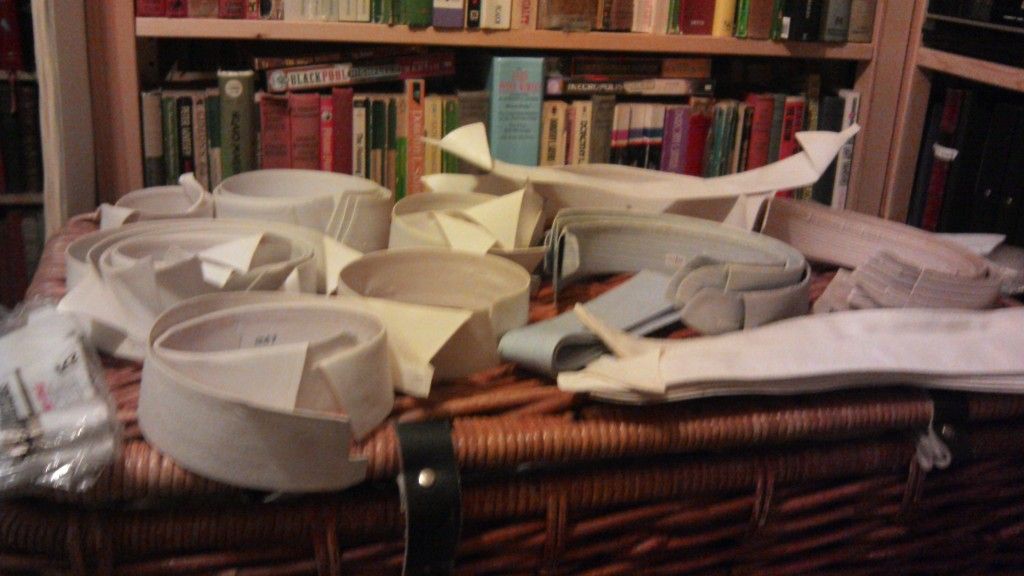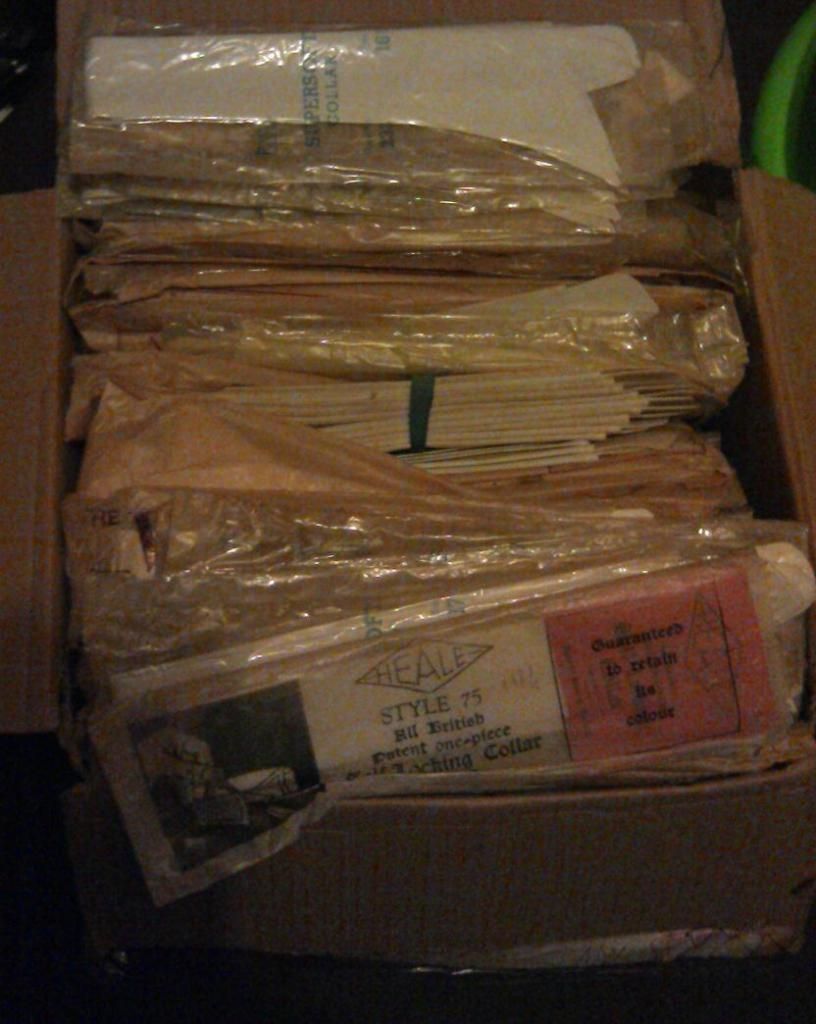Evan Everhart
A-List Customer
- Messages
- 457
- Location
- Hollywood, California
Nice collars old man! Bravo! Are you into stand up collars at all? If so, you might be interested in a poke collar

 John Lofgren Monkey Boots Shinki Horsebuttt - $1,136 The classic monkey boot silhouette in an incredibly rich Shinki russet horse leather.
John Lofgren Monkey Boots Shinki Horsebuttt - $1,136 The classic monkey boot silhouette in an incredibly rich Shinki russet horse leather.  Grant Stone Diesel Boot Dark Olive Chromexcel - $395 Goodyear welted, Horween Chromexcel, classic good looks.
Grant Stone Diesel Boot Dark Olive Chromexcel - $395 Goodyear welted, Horween Chromexcel, classic good looks.  Schott 568 Vandals Jacket - $1,250 The classic Perfecto motorcycle jacket, in a very special limited-edition Schott double rider style.
Schott 568 Vandals Jacket - $1,250 The classic Perfecto motorcycle jacket, in a very special limited-edition Schott double rider style. 

Thank you very much for the run down Dinerman, greatly appreciated.JonnyO, The Arrow "Gage" model collar was introduced in 1923, described as a "small roll front" collar. They kept the model name into the 1950s for attached collar shirts, by that point, described as a "soft collar with 'regular' length points".
High hats and Arrow collars,
White spats and lots of dollars,
Spending every dime,
For a wonderful time...
If you're blue and you dunno,
Where to go to,
Why don'tcha go,
Where fashion sits?
Puttin' on the Ritz... .
Harlem was fashionable in the twenties. White patrons flocked to the famous Cotton Club for the jazz shows. This is what Putting On The Ritz in its original form was about.
Later when fashions changed Cole Porter rewrote the lyrics and got some more mileage (royalties) out of it. This kind of thing was not uncommon at the time. Some songs were re released with no changes except a new title on the sheet music.
Langston Hughes explains.
When the Negro Was in Vogue
from The Big Sea* by Langston Hughes
White people began to come to Harlem in droves. For several years they packed the expensive Cotton Club on Lenox Avenue. But I was never there, because the Cotton Club was a Jim Crow club for gangsters and monied whites. They were not cordial to Negro patronage, unless you were a celebrity like Bojangles. So Harlem Negroes did not like the Cotton Club and never appreciated its Jim Crow policy in the very heart of their dark community. Nor did ordinary Negroes like the growing influx of whites toward Harlem after sundown, flooding the little cabarets and bars where formerly only colored people laughed and sang, and where now the strangers were given the best ringside tables to sit and stare at the Negro customers--like amusing animals in a zoo.
The Negroes said: "We can't go downtown and sit and stare at you in your clubs. You won't even let us in your clubs." But they didn't say it out loud--for Negroes are practically never rude to white people. So thousands of whites came to Harlem night after night, thinking the Negroes loved to have them there, and firmly believing that all Harlemites left their houses at sundown to sing and dance in cabarets, because most of the whites saw nothing but the cabarets, not the houses.
Some of the owners of Harlem clubs, delighted at the flood of white patronage, made the grievous error of barring their own race, after the manner of the famous Cotton Club. But most of these quickly lost business and folded up, because they failed to realize that a large part of the Harlem attraction for downtown New Yorkers lay in simply watching the colored customers amuse themselves. And the smaller clubs, of course, had no big floor shows or a name band like the Cotton Club, where Duke Ellington usually held forth, so, without black patronage, they were not amusing at all.
Some of the small clubs, however, had people like Gladys Bentley, who was something worth discovering in those days, before she got famous, acquired an accompanist, specially written material, and conscious vulgarity. But for two or three amazing years, Miss Bentley sat, and played a big piano all night long, literally all night, without stopping--singing songs like "St. James Infirmary," from ten in the evening until dawn, with scarcely a break between the notes, sliding from one song to another, with a powerful and continuous under beat of jungle rhythm. Miss Bentley was an amazing exhibition of musical energy--a large, dark, masculine lady, whose feet pounded the floor while her fingers pounded the keyboard--a perfect piece of African sculpture, animated by her own rhythm…
But when the place where she played became too well known, she began to sing with an accompanist, became a star, moved to a larger place, then downtown, and is now in Hollywood. The old magic of the woman and the piano and the night and the rhythm being one is gone. But everything goes, one way or the other. The '20s are gone and lots of fine things in Harlem night life have disappeared like snow in the sun--since it became utterly commercial, planned for the downtown tourist trade, and therefore dull.


I understand that for hard, starched collars wearing them outside the collar band is the norm, but wearing these inside makes me wonder if wearing the collar on the inside is the way they should be worn instead.